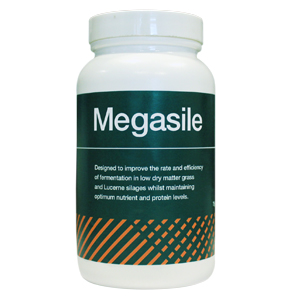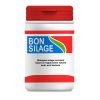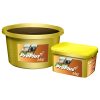Megasile Forage Additives
Over the last 25 years there has been significant improvements in the way that forage is harvested, ensiled and fed. The quality and consistency of silage is an important factor in any dairy or beef enterprises, which can often determine the outcome of a successful winter feeding programme. The quality and quantity of silage available has a direct impact on livestock performance, influencing milk yields in dairy cattle and live weight gains in beef.
Quality silage with high dry matter, crude protein and energy can help ease on farm costs by reducing the need for excessive supplementation over the winter months.
Careful grassland management and crop husbandry is key, and so to is selecting the correct silage additive. The Megasile range offers two variations, each carefully formulated to quickly stabilise Ph levels, ensuring a high-quality silage remains.
Megasile
In preserving grass as a stable, palatable silage, the aim is to convert sugar present in the grass to acid, effectively pickling the grass as a stable silage.
In low dry matter grass or lucerne crops buffering capacity is increased due to the levels of protein and water. This requires a greater production of acid to reduce the pH effectively. Lactic acid is the strongest of the organic acids, so producing lactic acid from sugar in the grass will drop the pH faster than producing any other acids by fermentation – so a fermentation dominated by lactic- acid-producing bacteria is needed. “Homofermentative” lactic acid bacteria, ferment sugar to produce only lactic acid, meaning they are much more efficient in bringing about a rapid drop in pH.
Megasile, includes 5 different strains of homofermentative lactic acid bacteria, which interact rather like a relay team, working together to reduce the pH very quickly after the grass is ensiled.
This produces a stable pH faster after the grass is ensiled which ensures more of the original nutrients in the grass are preserved in the final silage.
Benefits
- Faster fermentation (pH drop) – Achieving a stable silage more quickly
- Reduce DM and protein losses – Preserving more nutrition in the silage
- Increase silage energy, digestibility and palatability
- Increases silage intakes for improved animal performance
Application Rate: 1.5g/tonne



